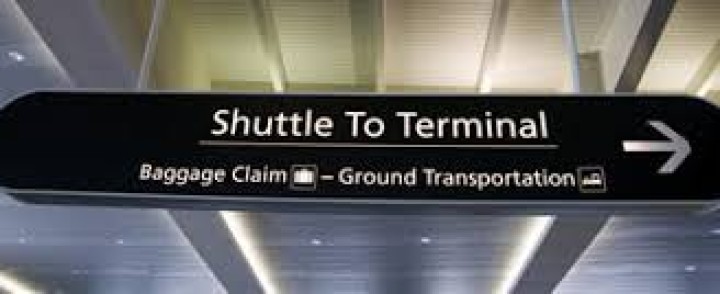Airports feared losing revenue to Uber and Lyft. Here’s what happened
Airport officials were understandably nervous when Uber and Lyft drivers began pulling up at terminals across the country a few years ago.
After all, more fliers using the relatively cheap ride-hailing services could mean that fewer would pay for airport parking and rental car services — two significant sources of airport revenue.
“At the time, all we knew was there was some uncertainty around it,” said Ryan Yakubik, deputy executive director and chief financial officer at Los Angeles International Airport.
But a look at Southern California airport budgets shows that the move to let ride-hailing services pick up and drop off passengers — and pay a fee to do it — was not the financial disaster some had feared. Technology-amped gig-economy start-ups have disrupted many industries in the last decade but most of the airports in the region appear to be either unfazed or bolstered by the changes.
And a good thing, too. Although airports are generally self-supporting, a sharp decline in revenue would probably be resolved by increasing other fees, which could get passed along to travelers.
At Los Angeles International Airport — one of the nation’s busiest airports — ride-hailing service drivers pay a $4 fee for every passenger picked up or dropped off at the airport curb. Uber, Lyft and other ride-hailing companies are charged fees of varying amounts by other local airports. Such fees typically are passed along to passengers as a surcharge.
Ride-hailing fees at LAX generated $44.3 million in fiscal 2018 and $33.7 million in fiscal 2017, up sharply from the $8.9 million in fiscal 2016, when ride-hailing services were prohibited from dropping off and picking up passengers in the same trip.
The hike in ride-hailing money more than made up for the decline in revenue from rental car companies, which dropped to $84.1 million in fiscal 2018 from $87.4 million in fiscal 2017, according to LAX budget records.
LAX parking revenue totaled $96.7 million in fiscal 2018, unchanged from 2017, which LAX officials attribute in part to closure of sections of a parking lot for a $4.9-billion construction project connecting the central terminal with a car rental facility, a ground transportation hub and a station on the Metro Crenshaw Line.
“The fact that people are taking Uber and Lyft in such volume is a good thing,” said Justin Erbacci, LAX chief innovation and technology officer. “It shows people like to use them to get to the airport.”
Most of Southern California’s smaller airports have thrived since the introduction of ride-hailing services. At John Wayne Airport in Santa Ana the financial picture has not been so rosy since ride-hailing companies began serving the airport in 2015. The Orange County airport saw parking revenue drop 7.4%, or $3 million, in the fiscal year that ended June 30, 2017, compared with the previous year, according to the most recent budget reports available. In that same period, fees charged to ride-hailing services generated $1.2 million. Revenue from rental car businesses at the airport was nearly the same as in the previous year.
Airport officials said ride-hailing revenue is expected to rise because the companies last year began paying a $2.25 fee for each drop-off on top of the fee charged for pickups. The fee increased to $3 on March 1. Airport industry experts say there are no recent studies on the broad airport revenue impact of Uber, Lyft and other ride-hailing firms, but they say the experience hasn’t been uniform across the board.
Some large and midsize airports have suffered financially in states such as Oklahoma and Idaho where airports are prohibited by state law from charging ride-hailing services for dropping off or picking up passengers at terminals, industry experts said. “Are they taking a financial hit?” said Carter Morris, executive vice president of the American Assn. of Airport Executives, a trade group that represents executives at 875 airports nationwide. “That’s an airport-by-airport picture.”
Over the last three years or so, ride-hailing services have become ubiquitous in big cities, especially popular among business travelers. Airports initially restricted Uber and Lyft to dropping off passengers at the terminal curbs but eventually reached deals to let them also pick up rides.
In 2018, Uber was — for the second year in a row — the No. 1 expensed brand among business travelers who use Certify, a cloud-based travel and expense report company. Lyft was ranked as the sixth-most expensed brand last year, behind companies including Starbucks and Delta Air Lines, according to Certify, which based the ranking on more than 50 million expenses filed in North America.
The effect of ride-hailing services on airports is difficult to gauge accurately because ride-hailing gained popularity at the same time that demand for air travel surged.
Continue reading:
https://www.latimes.com/business/la-fi-airport-uber-parking-revenue-20190301-story.html
- Airports feared losing revenue to Uber and Lyft. Here’s what happened.



